-
вернутьсяX
-
Компоненты
-
-
Category
-
Полупроводниковые приборы
- Диоды
- Тиристоры
-
Электро-изолированные модули
- Электроизолированные модули | ВИШАЙ (ИК)
- Электроизолированные модули | INFINEON (EUPEC)
- Электроизолированные модули | Семикрон
- Электроизолированные модули | POWEREX
- Электроизолированные модули | IXYS
- Электроизолированные модули | ПОЗЕЙКО
- Электроизолированные модули | ABB
- Электроизолированные модули | TECHSEM
- Перейти в подкатегорию
- Выпрямительные мостики
-
Транзисторы
- Транзисторы | GeneSiC
- Модули SiC MOSFET | Mitsubishi
- Модули SiC MOSFET | STARPOWER
- Модули ABB SiC MOSFET
- Модули IGBT | МИЦУБИСИ
- Транзисторные модули | MITSUBISHI
- Модули MOSFET | МИЦУБИСИ
- Транзисторные модули | ABB
- Модули IGBT | POWEREX
- Модули IGBT | INFINEON (EUPEC)
- Полупроводниковые элементы из карбида кремния (SiC)
- Перейти в подкатегорию
- Драйвера
- Блоки мощности
- Перейти в подкатегорию
- Электрические преобразователи
-
Пассивные компоненты (конденсаторы, резисторы, предохранители, фильтры)
- Резисторы
-
Предохранители
- Миниатюрные предохранители для электронных плат серии ABC и AGC
- Быстрые трубчатые предохранители
- Медленные вставки с характеристиками GL/GG и AM
- Ультрабыстрые плавкие вставки
- Быстрые предохранители английский и американский стандарт
- Быстрые предохранители европейский стандарт
- Тяговые предохранители
- Высоковольтные предохранительные вставки
- Перейти в подкатегорию
-
Конденсаторы
- Конденсаторы для электромоторов
- Электролитические конденсаторы
- Конденсаторы типа snubbers
- Конденсаторы мощности
- Конденсаторы для цепей DC
- Конденсаторы для компенсации пассивной мощности
- Высоковольтные конденсаторы
- Конденсаторы большой мощности для индукционного нагрева
- Импульсные конденсаторы
- Конденсаторы звена постоянного тока
- Конденсаторы для цепей переменного/постоянного тока
- Перейти в подкатегорию
- Противопомеховые фильтры
- Ионисторы
-
Защита от перенапряжения
- Ограничители перенапряжения для приложений RF
- Ограничители перенапряжения для систем технического зрения
- Ограничители перенапряжения для линий электропередач
- Ограничители перенапряжения для светодиодов
- Ограничители перенапряжения для фотовольтаики
- Ограничители перенапряжения для систем взвешивания
- Ограничители перенапряжения для Fieldbus
- Перейти в подкатегорию
- Перейти в подкатегорию
-
Реле и контакторы
- Теория реле и контакторы
- Полупроводниковые реле AC 3-фазные
- Полупроводниковые реле DC
- Контроллеры, системы управления и аксессуары
- Системы плавного пуска и реверсивные контакторы
- Электро-механические реле
- Контакторы
- Оборотные переключатели
-
Полупроводниковые реле AC 1-фазные
- РЕЛЕ AC 1-ФАЗНЫЕ СЕРИИ 1 D2425 | D2450
- Однофазное реле AC серии CWA и CWD
- Однофазное реле AC серии CMRA и CMRD
- Однофазное реле AC серии PS
- Реле AC двойное и четверное серии D24 D, TD24 Q, H12D48 D
- Однофазные твердотельные реле серии gn
- Однофазные полупроводниковые реле переменного тока серии ckr
- Однофазные реле переменного тока ERDA И ERAA SERIES для DIN-рейки
- Однофазные реле переменного тока на ток 150А
- Двойные твердотельные реле, интегрированные с радиатором для DIN-рейки
- Перейти в подкатегорию
- Полупроводниковые реле AC 1-фазные для печати
- Интерфейсные реле
- Перейти в подкатегорию
- Индукционные компоненты
- Радиаторы, варисторы, термическая защита
- Вентиляторы
- Кондиционеры, оборудование для шкафов, охладители
-
Аккумуляторы, зарядные устройства, буферные источники питания и инверторы
- Аккумуляторы, зарядные устройства - теоретическое описание
- Модульные литий-ионные аккумуляторы, пользовательские батареи, Система управления батареями (BMS)
- Аккумуляторы
- Зарядные устройства и аксессуары
- Резервный источник питания ИБП и буферные источники питания
- Преобразователи и аксессуары для фотовольтаики
- Хранилище энергии
- Топливные элементы
- Литий-ионные аккумуляторы
- Перейти в подкатегорию
-
Автоматика
- Futaba Drone Parts
- Концевые выключатели, Микровыключатели
- Датчики Преобразователи
- Пирометры
- Счетчики, Реле времени, Панельные измерительные приборы
- Промышленные защитные устройства
- Световые и звуковые сигнальные установки
- Термокамеры, Тепловизоры
- LED-экраны
- Управляющая аппаратура
-
Регистраторы
- Регистраторы температуры с записью на ленту и с цифровым показателем - AL3000ym - AL3000
- Микропроцесорные регистраторы с экраном LCD серия KR2000
- Регистратор KR5000
- Измеритель с функцией регистрации влажности и температуры HN-CH
- Эксплуатационные материалы для регистраторов
- Компактный графический регистратор 71VR1
- Регистратор KR 3000
- Регистратор PC серии R1M
- Регистратор PC серии R2M
- Регистратор PC, USB, 12 изолированных входов – RZMS
- Регистратор PC, USB, 12 изолированных входов – RZUS
- Перейти в подкатегорию
- Перейти в подкатегорию
-
Провода, литцендрат, гофрированные рукава, гибкие соединения
- Провода
- Многожильные провода (Lica)
-
Кабели и провода для специальных применений
- Удлинительные и компенсационные провода
- Провода для термопар
- Присоединительные провода для датчиков PT
- Многожильные провода темп. от -60C до +1400C
- Провода среднего напряжения
- Провода зажигания
- Нагревательные провода
- Одножильные провода темп. от -60C до +450C
- Железнодородные провода
- Нагревательные провода в Ex
- Перейти в подкатегорию
- Оболочки
-
Плетеные кабели
- Плоские плетеные кабели
- Круглые плетеные кабели
- Очень гибкие плетеные кабели - плоские
- Очень гибкие плетеные кабели - круглые
- Медные цилиндрические плетеные кабели
- Медные цилиндрические плетеные кабели и кожуха
- Гибкие заземляющие ленты
- Цилиндрические плетеные провода из луженой и нержавеющей стали
- Медные изолированные плетеные провода PCV - температура до 85 градусов C
- Плоские алюминиевые плетеные провода
- Соединительный набор - плетеные провода и трубки
- Перейти в подкатегорию
- Аксессуары для тяги
- Кабельные наконечники
- Изолированные эластичные шины
- Многослойные гибкие шины
- Системы прокладки кабеля (PESZLE)
- Трубы
- Перейти в подкатегорию
- Просмотреть все категории
-
Полупроводниковые приборы
-
-
- Поставщики
-
Программы
- Energy bank
- Автоматика HVAC
- Горное дело, металлургия и литейное дело
- Двигатели и трансформаторы
- Измерение и регулирование температуры
- Измерение и регулирование температуры
- Индукционный нагрев
- Индустриальная автоматизация
- Источники питания (ИБП) и выпрямительные системы
- Компоненты для потенциально взрывоопасных сред (EX)
- Машины для сушки и обработки древесины
- Машины для термоформования пластмасс
- Оборудование для распределительных, контрольных и телекоммуникационных шкафов
- Печать
- Приводы переменного и постоянного тока (инверторы)
- Промышленная автоматика
- Промышленные защитные устройства
- Сварочные аппараты и сварочные аппараты
- Станки с ЧПУ
- Трамвай и ж / д тяга
-
Монтаж
-
-
Индукторы
-
-
Индукционные устройства
-
-
https://www.dacpol.eu/pl/naprawy-i-modernizacje
-
-
Услуга
-
- Контакт
- Zobacz wszystkie kategorie
Industrial pressure sensors - principle of operation, types and application

Pressure is one of the basic measurements performed in the vast majority of industrial and manufacturing facilities. The primary functions of such sensors are to measure pressure and transmit the collected information to external devices.
Due to the ability of most sensors to convert an input signal into an analog or digital electrical signal, they are also often called transducers.
Principle of operation of industrial pressure sensors
Pressure sensors work like a strain gauge by using the deformation of a membrane made of silicone, metal or ceramic. Pressure is a non-electrical signal, so it is necessary to convert these values into signals that electrical devices can easily use. The precise construction of membrane pressure sensors allows them to work efficiently with electronic circuits, so that when a flexible element is deformed, the measured value is immediately converted into an electrical signal proportional to the amount of pressure applied.
The most popular solutions are sensors with silicon and stainless steel membranes. The first solution increases the pressure resistance of the membrane, so the lifetime of such sensors increases significantly. Additionally, silicon can be combined with other materials, e.g. ceramics, to obtain new properties that increase the transmitters' performance. The second solution can be found in sensors that operate in harsh environments and heavy industry.
Types of industrial pressure sensors
There are many types of pressure transmitters on the market. The choice of a particular solution depends on the end application, but above all on the measuring system. A very popular solution are differential sensors, which measure the pressure from two sources on a membrane. The deflection resulting from this difference gives information about the relationship between the pressure of the measured gas and the external pressure.
Relative pressure sensors, which measure pressure relative to vacuum or atmospheric pressure, are another option. Absolute pressure sensors that compare the measurement with vacuum exclude the influence of atmospheric pressure on the measurement. Such solutions are often found in applications for checking the tightness of sealed tanks.
Technical information about industrial pressure sensors
Before purchasing a sensor for the solution, it is worth to get acquainted with several parameters that can be helpful in selecting the right element:
Measuring range
Several standards are used in industry to measure analog signals. The standards used in pressure transmitters are 4 - 20 mA, 0 - 10 V and 0.5 - 4.5 V.
Because of the need to choose the right measurement accuracy, most facilities use sensors that have the ability to switch between different ranges.
Minimum pressure
Each transmitter has a lower measurement limit for which it will show the correct pressure values. With a measurement range of 4 - 20 mA, this will be 0 bar for 4 mA.
Maximum pressure
This is the upper measurement limit of the sensor. When we have the minimum and maximum pressure, we are able to select a suitable sensor with this measurement range.
Power supply
Determining the type and value of the power supply is critical for any sensor. The industry standard is 24 VDC.
Use of industrial pressure sensors
Pressure sensors can be found in many advanced applications and industries. Pressure transmitters are commonly used in:
- Manufacturing industry;
- Heavy industry – military and aeronautics;
- Hydraulic industry;
- Automotive industry;
- Medical and chemical industry;
- HVAC systems – heating, ventilation, air conditioning.
Despite their small size, pressure sensors are key elements of every automation system. They are able to monitor the course of processes and work of devices and installations, allowing for quick elimination of any failures and damages in production processes. With many years of experience in distribution of products and devices for automation, Dacpol offers the best solutions to meet customer requirements. Our offer includes a wide range of pressure sensors for industrial applications. Our specialists will help you choose the right solution and answer all your questions.
Связанные продукты
Связанные посты
 Now available – DC/DC converters from PREMIUM
Now available – DC/DC converters from PREMIUM
 New release in DACPOL lighting for lathes – Kira covers
New release in DACPOL lighting for lathes – Kira covers




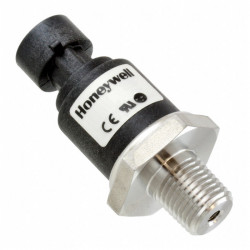
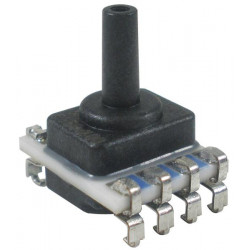
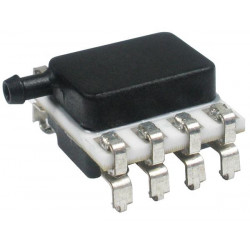
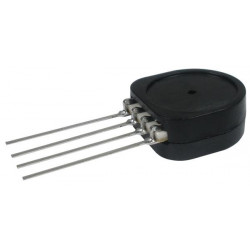
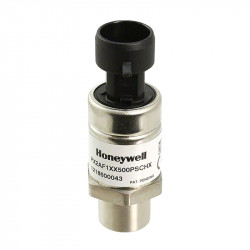
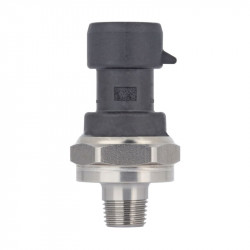
Оставить комментарий